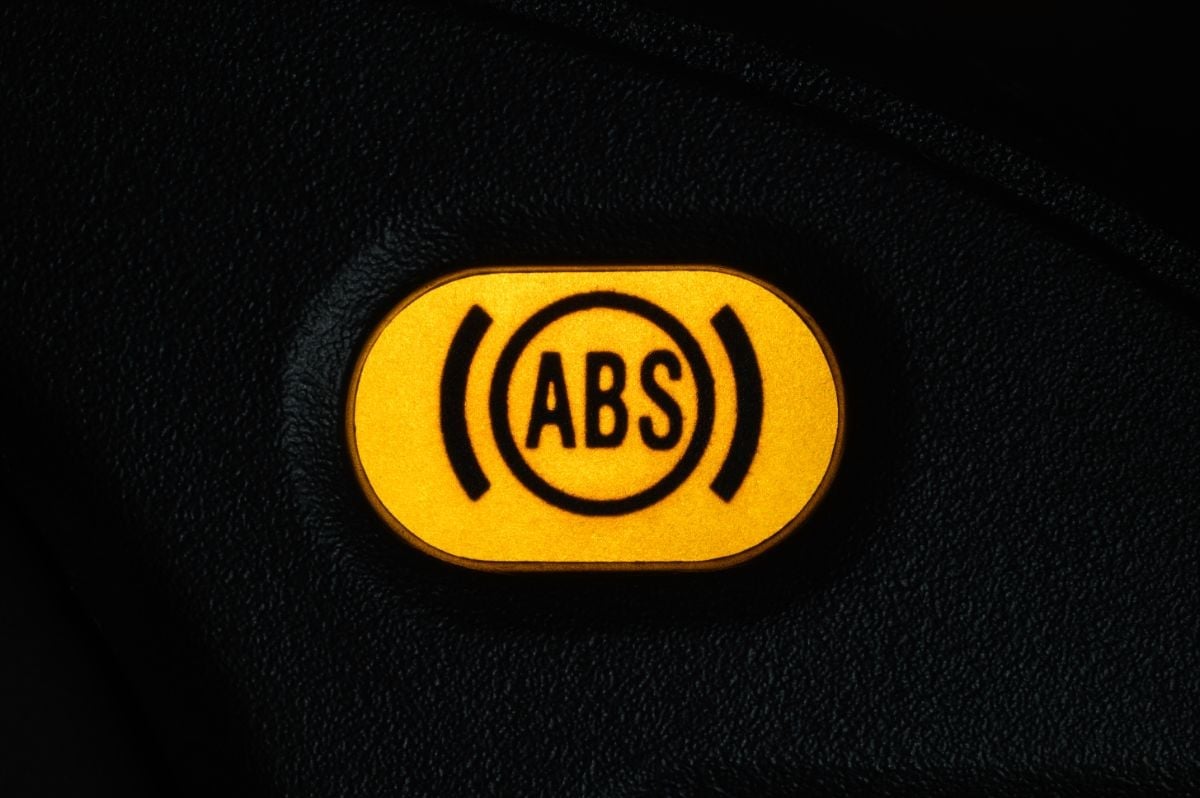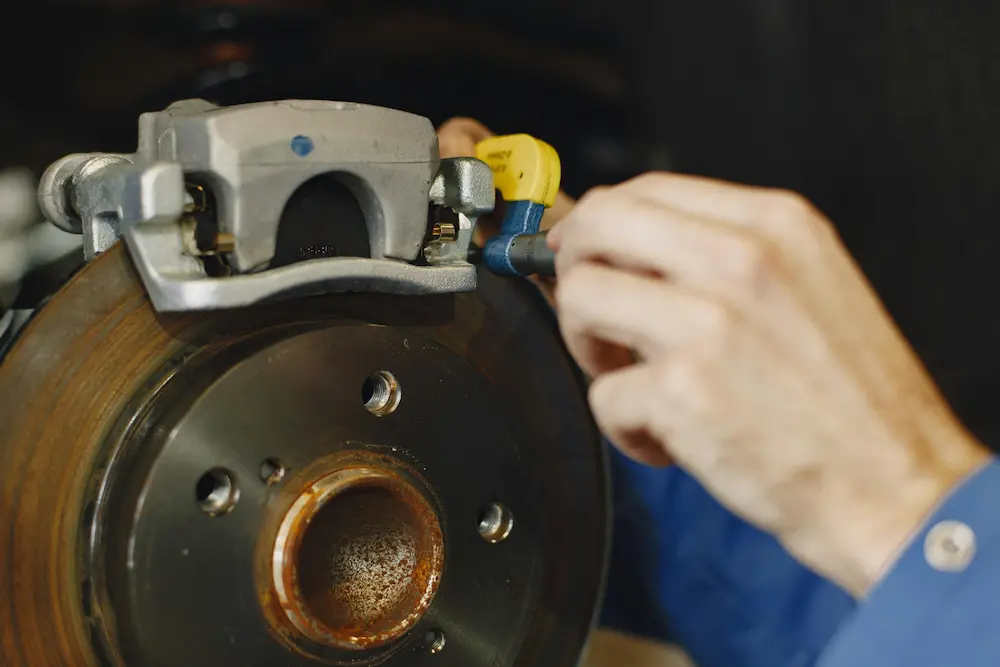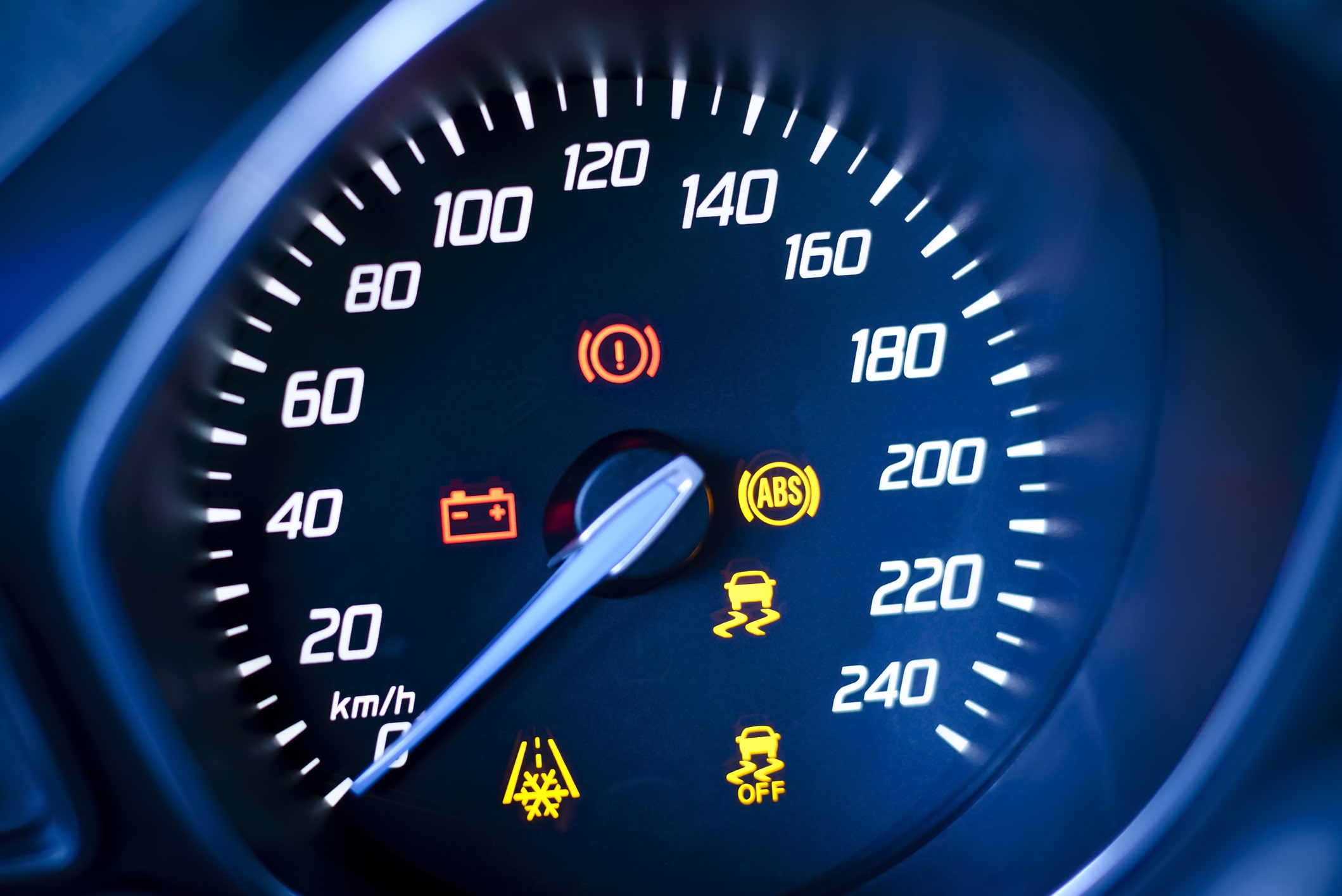ABS (anti-lock braking system) is one of the most important and ubiquitous safety features in modern vehicles. Almost all modern cars have it save for the most budget of models, making it almost as important as seatbelts. ABS typically kicks in during emergencies to ensure that the tires don’t lock up while braking, preventing the car from skidding and getting into an accident. While most car owners would have no problems with their ABS, there’s still a chance it can malfunction. And that is when the ABS warning light comes on.
So what could cause the ABS light to come on, and is it dangerous to keep driving with it on? Let’s find out.

What is ABS?
The anti-lock braking system or ABS is the system that prevents the driver from locking the car’s brakes and wheels, especially in emergency situations. If you apply excessive pressure on the brakes, such as in an emergency, it can cause the wheels and axles to stop rotating completely. With the wheels locked up and the car still moving at high speed, your vehicle could lose control and skid off the road or into oncoming traffic.
When the driver presses the car’s brakes, ABS monitors the wheels’ rotation to detect if they’re going to slip. If it detects a slip, the system will pump the brakes at certain intervals to prevent the wheels from locking up, thus reducing the risk of the car skidding or sliding off the road.
Generally, ABS doesn’t stop the car faster or display improved braking performance. Rather, it’s an automatic system that helps us better control the braking in emergencies so we can still maneuver the car and avoid a collision.
Read More: Malfunctions in Car Safety Features and How to Check Them Before It’s Too Late!
Why is Your ABS Warning Light On?
The ABS warning light on the car dashboard usually indicates a problem with the ABS. However, other issues unrelated to the ABS can also cause the light to come on such as problems with related components or sensors.
1. Non-functional ABS Module
Problems with the ABS module are among the most common things that cause the ABS light to come on. A corroded ABS module prevents the system from receiving information from the speed sensors on the car’s tires, ultimately causing the warning light to come on. Additionally, the ABS shares several important components with the vehicle’s traction control system (TCS) which functions to ensure all four wheels of the car rotate smoothly.
If the TCS detects a problem, such as irregular wheel rotation, it will cut off power from the engine until the traction returns to normal. Because both systems use the same control module and diagnostic system, damage to the TCS can affect the ABS as well. This means that any problem with the TCS can cause the ABS light to come on. Therefore, it’s a good idea to also check the TCS in your car if the ABS light is on.
Read More: A Guide to Car Warning Lights Part 2
Symptoms of a Malfunctioning ABS Module:
- The brake pedal becomes less responsive over time, whereby you need to press the brake pedal harder to stop the car.
- The check engine light can come on since a fault in the ABS can be stored in the engine control module, triggering the check engine light.
- A clicking or cracking sound, especially when pressing the brakes.
- The brakes lock up during regular driving.
2. Low Brake Fluid

The brake fluid plays a crucial role in the vehicle’s braking system, especially in controlling the brake pressure in the anti-lock brake system. A hydraulic brake system, for example, transfers force through the brake fluid to the brake pads, causing the brake pads to grip the brake rotors, thus stopping the car.
Therefore, you need adequate brake fluid to ensure the brakes function properly. Brake fluid leaks are a common issue that can trigger the ABS light, and while the light might be annoying, having low brake fluid is dangerous as it may reduce your car’s stopping power or cause your brakes to fail altogether.
Symptoms of Low Brake Fluid
- The brakes become less responsive, causing the car to take longer to stop.
- A scraping or grinding sound, similar to the sound produced by worn brake pads.
3. Malfunctioning Vehicle Speed Sensor
Modern car wheels are equipped with a speed sensor that monitors the wheels’ rotation and sends information about each wheel’s rotational speed to the ABS. If the speed sensor detects one of the tires moving at an abnormal speed, the system will increase the brake pressure on that tire, allowing the tire to move at a normal speed, just like the other tires. In other words, it will maintain the speed of all tires.
However, if there’s any issue with the speed sensor, such as dirt or damage, it may not function well, affecting its ability to transmit such critical information to the ABS, causing the ABS light to come on.
Symptoms of a Malfunctioning Speed Sensor
- The traction control light illuminates.
- The car takes a long time to stop, even though the ABS warning light is not on.
- The car loses control or traction, especially when braking hard.
4. Unresponsive Hydraulic Pump or Valve
The ABS controls the wheel speed via the hydraulic brake system. If one of the car tires moves at a different speed than the others, the speed sensor will detect it and alert the ABS. It will then activate the hydraulic brake pump to increase the brake fluid pressure to balance the tires’ speed allowing the tires to maintain traction on the road surface.
However, if the hydraulic pump or valve is damaged and not functioning properly, the ABS can’t do its job, causing the ABS warning light to illuminate. Both of these components are usually worn or damaged due to dirt or metal shavings in the brake fluid. That’s why you should always check the brake fluid level and condition every time you service your car’s brakes.
Symptoms of a Malfunctioning Hydraulic Pump/Valve
- Reduced brake performance that can worsen over time.
- Inconsistent brake performance – sometimes good and sometimes weak.
- Brake fluid leakage from the master cylinder or firewall in the engine bay.
- If there’s a leak, air will enter the brake system causing the brakes to feel spongy.
5. Blown Fuse
The ABS light comes on if there’s a malfunction in the system. This includes blown fuses and damaged wires connecting the speed sensor and controller. Like any other electrical component in a car, the ABS is equipped with its own fuse – and fuses are prone to blowing up. If the fuse blows, the system will send a warning signal that usually activates both the ABS light and the engine warning light. Therefore, it’s a good idea to check your fuse first if you notice both warning lights are illuminated.
Make sure the fuse is not blown or burnt before spending time inspecting other parts of your car or replacing unrelated components. On most modern cars, you’ll find the fuse box in the engine bay.
Read More: Stop Driving On An Almost-empty Fuel Tank Or Risk Damaging Your Fuel Pump
Is It Safe to Drive When the ABS Warning Light Is On?
In general, you can still continue driving even if your car’s ABS light is on. This is because your car’s brakes still function as usual and can still slow your vehicle down. However, your car’s tires are at risk of getting locked under heavy braking and that limits your maneuverability in emergencies. Therefore, you should always try to fix the issue as soon as possible if your ABS light comes on.
What to Do When the ABS Light Comes On?
The ABS light indicates an issue with the ABS and in some instances, the braking system. Therefore, if you notice the light illuminating while driving, you should drive more carefully and avoid aggressive braking. Find a safe place to park your car and turn off the engine for a moment. Then, restart your engine.
Just like any other electrical equipment (your computer or phone), restarting the system allows it to recheck all the sensors giving it a chance to detect any damage or abnormalities with the ABS. This method can usually help fix the ABS light issue. However, in some cases, it may not work. If the light is still on after you restart your car, Drive to a nearby workshop so a mechanic can inspect your car and give you a solution on how to fix the ABS light problem. Remember to drive slowly and avoid heavy braking to be safe.

While an illuminated ABS light is rarely a good thing, there are times when it routinely lights up. Here’s when the ABS light should and shouldn’t light up.
Normal: ABS Light Comes On and Off After Switching on the Car Battery
The ABS system will perform a self-check every time you start your car. After you turn on the engine, the ABS light will illuminate for a few seconds before turning off. However, if the ABS light is on longer than usual, it’s highly likely that your car’s ABS is experiencing a problem that requires immediate attention.
Abnormal: ABS Light Suddenly Comes On While Driving
As mentioned above, an ABS light that illuminates while you’re driving often signifies an issue with the ABS or braking system. That said, you can still carefully drive your car to get it checked at a nearby workshop.
If, however, the ABS light comes on along with the brake warning light, it’s a sure sign that you have an issue with your brakes. When this happens, you shouldn’t continue driving but instead, park at a safe spot and get a tow truck to tow your car to the nearest workshop to get it checked. Driving with the brake warning light on is very risky and could lead to an accident as your brakes could fail at any time.
Trade-In Your Car at CARSOME for a RM1,500 Rebate
The warning lights on your dashboard are there to alert you of any issues in your car. Ignoring them could not only be dangerous and lead to expensive repairs but also affect the resale or trade-in value of your car. If you’re considering selling your car, Why not trade it in at CARSOME? We’ll thoroughly inspect your car with our 175-point inspection process so you know the exact condition of your car.
Not only will we handle everything for you from the car inspection to the paperwork but you’ll be able to enjoy up to RM1,500 off the next car you buy from us!
Read More: How to Trade-In Your Car and Enjoy a RM1,500 Rebate from CARSOME
So what are you waiting for, visit CARSOME or download our app to get your dream car today.
